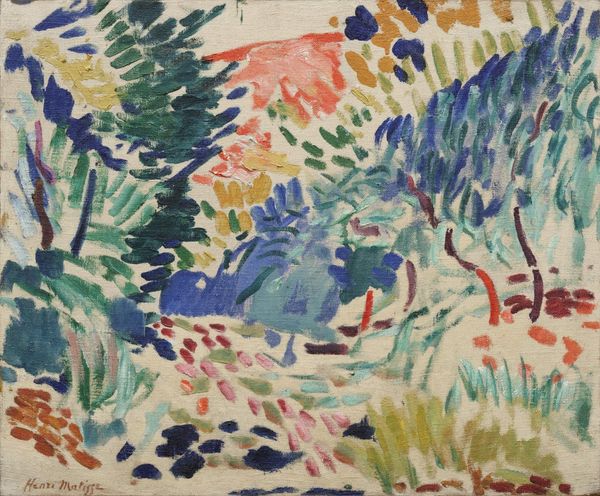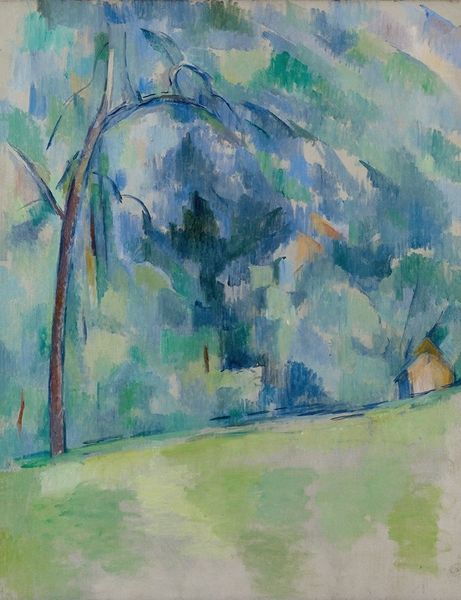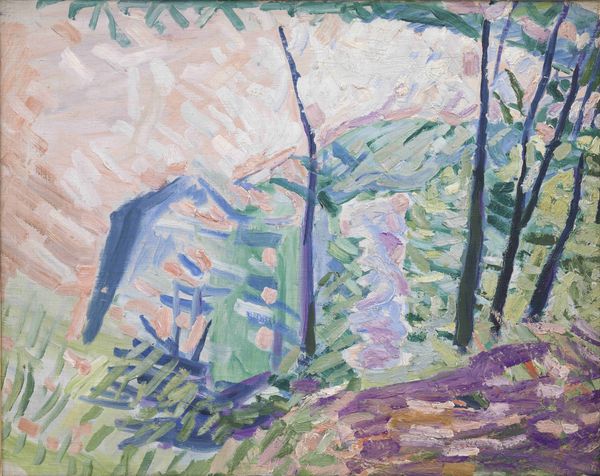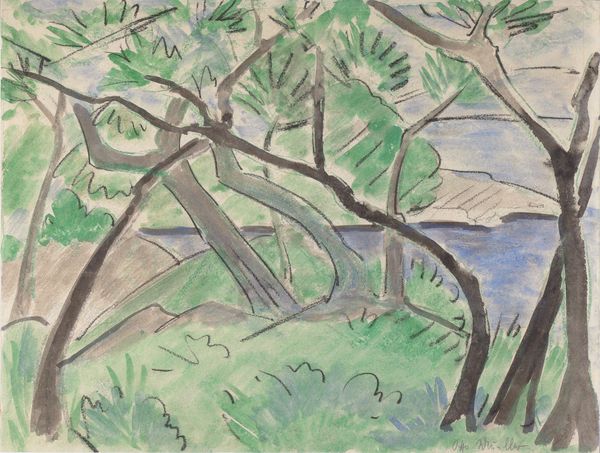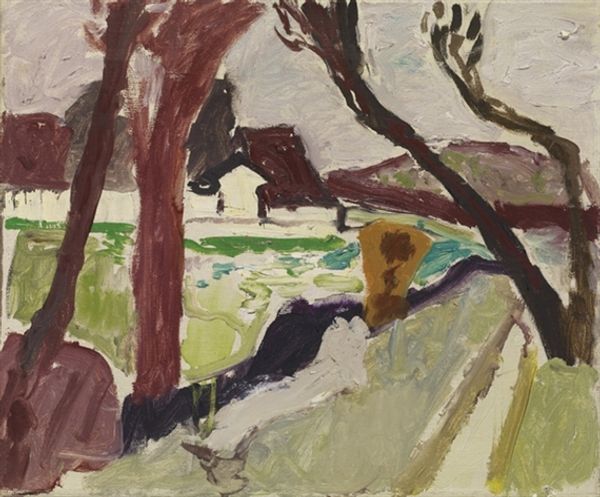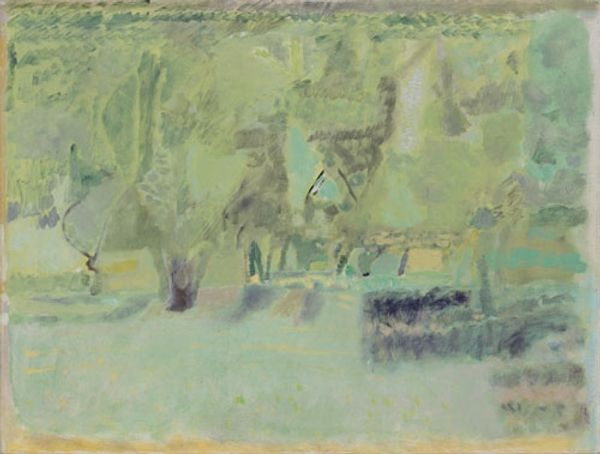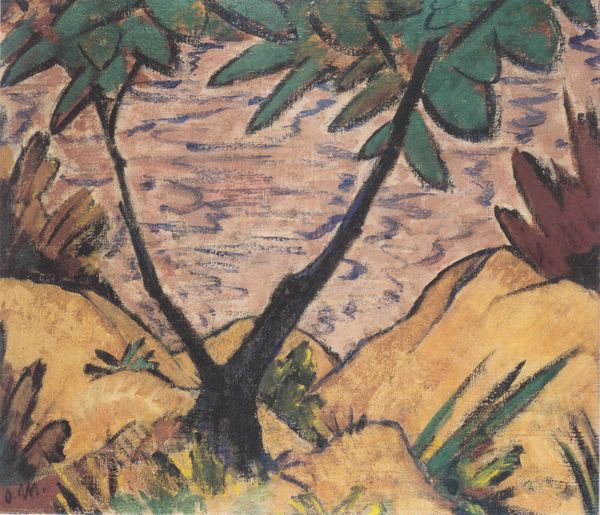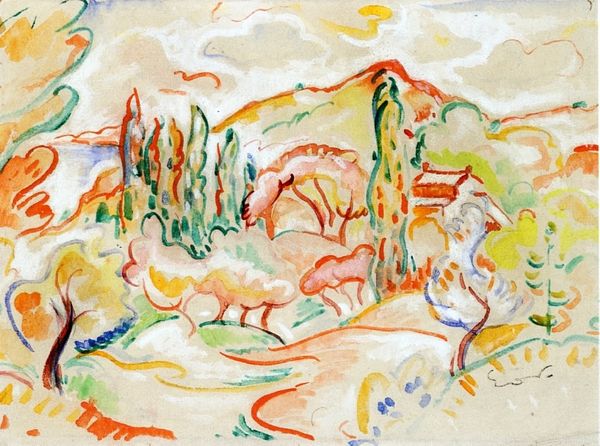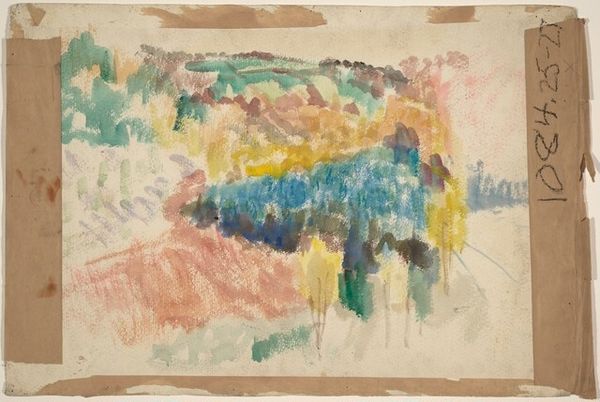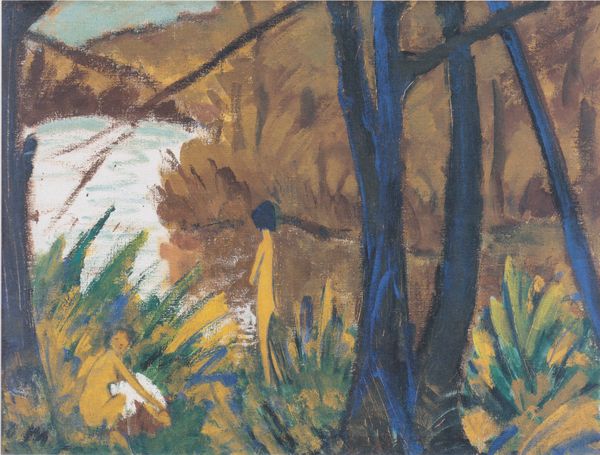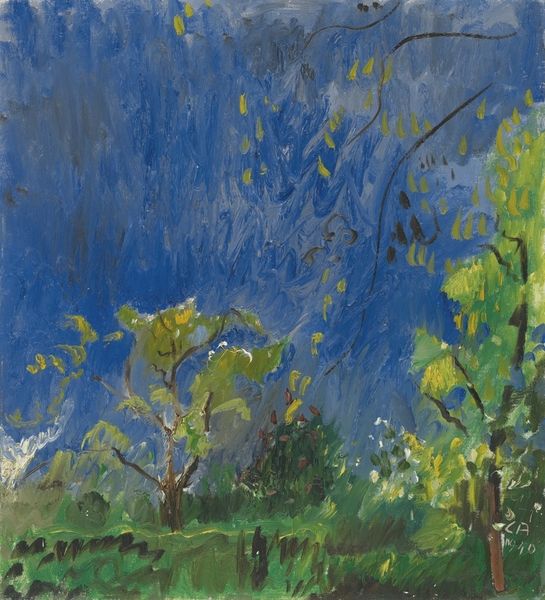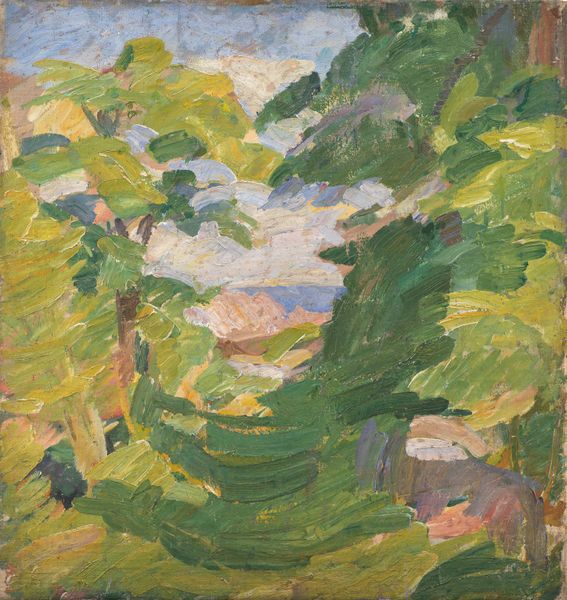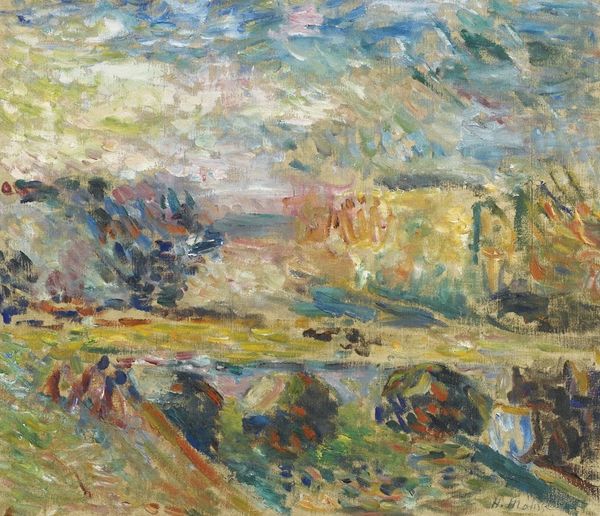
Copyright: Public domain US
Editor: This watercolor, titled "Étude Pour 'Le Bonheur De Vivre," painted by Henri Matisse in 1905, feels light and airy. It's almost like a dreamscape. How do you interpret this work? Curator: I see a radical exploration of color and form, breaking from academic tradition to represent pleasure and freedom. It’s a study, yes, but also a declaration. Think about the social context: early 20th century, growing industrialization, anxieties about modernity. What might this explosion of color be responding to? Editor: Maybe a yearning for something more natural and carefree? Curator: Precisely. Matisse was part of the Fauves, the "wild beasts." They challenged the established order, pushing boundaries. Consider the role of art in challenging societal norms, in critiquing dominant power structures. Does this sketch seem "finished" to you? Editor: No, not really. It's very loose and suggestive. Curator: Exactly. It resists traditional notions of beauty and finish. It demands a new way of seeing. Where do you think these stylistic choices may come from and who might be excluded by this “new” way of seeing? Editor: So, it's not just a pretty picture; it's a statement? A rebellion? Curator: Absolutely. It invites us to question our expectations and preconceived notions, both about art and about life. Editor: I never thought about watercolor being radical before, but it makes sense. Thank you for illuminating that for me. Curator: It’s important to consider the societal influence on artwork and its meaning for us as active members of society today.
Comments
No comments
Be the first to comment and join the conversation on the ultimate creative platform.
